Some Intelligent Competition
As Atari’s game console project Stella moves off the drawing boards and approaches its eventual release as the Video Computer System (VCS), Mattel Development head Richard Chang becomes interested in developing a competing system for his company, known largely as the makers of the hugely lucrative Barbie doll line. In 1976 he contacts Glen Hightower, president of Pasadena California based consulting firm APh to research the possibilities. They eventually find the chipset for the new system in a 1977 General Instruments catalog: the GIMINI Programmable Game Set. After some alterations to the off-the-shelf GI components, they build a motherboard around the 16-bit (while the CPU is a kludge of a 16 and 10 bit processor they still beat 16-bit systems Sega Genesis and NEC Turbo Grafix-16 by 10 years) CP1610 microprocessor in GIMINI, operating at 3.6 MHz accompanied by a dedicated graphics processor and 4K of available system RAM.
But by now Stella has become the VCS and is gathering steam in the marketplace, and Mattel balks at the thought of going head-to-head with Atari. Their new video game design is put on hold while the Hawthorne, CA-based Mattel Electronics tries their luck at hand-held LED games created using modified calculator chips. You could say these met with success: Mattel Electronic’s Football, released in 1977, becomes the top-selling toy in history at the time, hiking in around $25 million in wholesale purchases within a year. Mattel scores other LED game hits like Auto Race (1976), and Sub Chase (1978). With these handheld marvels pulling in a total of $112 million in sales by 1978, Mattel Electronics president Jeff Rochlis convinces the head honchos to give TV videogames another serious look. A team headed by Dave Chandler designs the hardware for their home gaming system using GI’s chipset, with David Rolfe of APh creating the core “Executive” operating system.
JUMP: Video playlist of Mattel Electronics’ LED handheld games

Inventing the Wheel
Mattel Introduces their new system at the 1979 Winter CES, with the game console inserted into a mock-up of a computer expansion system promising to turn it into a 64K computer complete with 64-key keyboard, cassette drive for storage and retrieval of data, and a microphone to be used by programs allowing audio input. Apropos, Atari also announces their 8-bit computer lineup at the same show. Along with the Intellivision, Mattel announces advanced sports games for their new system, as well as financial planning and personal database software. The system is dubbed Intellivision, a portmanteau of “intelligent television” that alludes to the brains of the computer add-on. A release date for the video game portion of the system is given as June 1, 1979, with 14 games and educational programs available for purchase in ROM packs alongside it. A price of $165 is reported for the game unit, and an NFL-licensed football game pack is to be bundled with it.
Click button to play NFL Football on the Mattel Intellivision
This info is later revised by Mattel, with the game console’s price rising to $250, and a release nationwide in July, which slips yet again. Mattel promises a 4 million dollar ad budget for the Intellivision, used largely for TV commercials. Test marketing of the game system eventually gets underway in Fresno, California in December 1979, at a price tag of 269.95 for the master component.

Don’t worry, Junior got the Intellivision and keyboard component and is now learning math! 1981 Mattel brochure.
The computer keyboard portion of the system, the development cost of which will eventually surpass $10 million, is initially given the same retail price as the gaming box had at its announcement, $165, with a release date of October 1, 1979. Other pie-in-the-sky promises from Mattel include dial-in modem access with the computer that will allow games to be downloaded on demand, an electronic mail system, and daily newspapers sent electronically to your home. The price tag for the computer system is subsequently upped to match the game console at $250. The release date slips to March of 1980, and the price adjusted to a hefty $800 for both the gaming and computer components together. Then Mattel promises to have the first shipments of the computer expansion out to stores in May of 1980, for a full release to the public by July. An explanation for the previous hold-ups is given by the magazine Consumer Electronics that the system was “delayed by engineering changes the firm made to the system, and by Mattel’s inability to obtain semiconductors”. The company then announces yet another slide to March of 1981, and gives a finalized price tag for the keyboard unit: a daunting $700 at retail and, lo and behold, the computer still fails to materialize. The continual delays for the keyboard become such a joke to employees that, when comedian Jay Leno entertains at the Mattel Electronics Christmas party in 1981, he draws a big laugh with the following line:
The Master Component, as the first videogame stage is called, is a distinctive looking device, low and rectangular in shape with wood grain trim and two very unusual controllers. They are flat rectangles, and instead of a joystick, they utilize a round, 16-position gold-coloured disc that the player presses to move the on-screen characters, presaging the D-Pad button that Nintendo would popularize later on their Game & Watch handhelds, Famicom and NES game console. There’s also a keypad, over which plastic overlays included with certain games can be inserted and used for extra commands during play. Unfortunately, the control discs are not a huge hit with players, along with the fact that their flimsy design leads to frequent controller breakdowns. Hardwired right into the system, this becomes a big problem for owners who have to slog the whole machine back to the dealer for repair.

Show floor of 1979 Summer CES in Chicago, Mattel Electronics booth top left
The Big Rollout
As the test marketing of Intellivision rolls along in Fresno, three large urban markets are also opened up to testing: L.A., New York City and Chicago. To get their foot in the door, Mattel executives first pitch the modular gaming/computer system to top management at certain large retail chains in these areas. The system is initially put up for sale during February and March of 1980 in The Broadway in L.A., Macy’s in New York and Marshall Field in Chicago. These outlets enjoy exclusive rights to sell the system for a week, as well as being the only stores listed in Mattel’s local ad spots. After this grace period, other retailers can join the party. Considering the relative complexity of Intellivision, in comparison to other available game systems (with the exception, perhaps, of the Odyssey² and its membrane keyboard), Mattel runs a training course for store staff who will serve as demonstrators of the system to boggled customers. These training courses take 18 hours over three days, both on site at Mattel’s HQ in Hawthorne, as well as in the field at various stores.

Members of the press throng the introduction of the Mattel Intellivision in Los Angeles at The Broadway, early 1980
These first test runs generate a lot of interest with shoppers and media, and when the Intellivision Master Component finally goes into wide release in the early summer of 1980, the entire run of 175,000 systems sell out. The initial price is now $299.95, 100 dollars higher than the VCS by that time, but with features far superior to its Atari rival, offering 16 available on-screen colours and three channel sound. Twelve games have made it to market along with the system, designed by Glen Hightower and programmed by the gang at APh. The cartridges are smaller profile than the VCS carts, with a cool angled end to them. Each game released from Mattel falls under a category, or Network, to niche the game…i.e. the Action Network, Arcade Network, Education Network. Personal Computer Networks are also announced, for the always-coming computer add-on, such as Financial Network, Self-Improvement Network, Self-Education Network ect., but this concept is later dropped as game genres start blending together. These are not to be confused with the later M Network series of games, introduced in 1982 by Mattel for competing systems like the VCS, ColecoVision and even some Apple II and IBM PC ports.
Click button to play Astroblast, M Network version of Astrosmash, for Atari 2600

The 1979 manual for the Keyboard Component gives examples of the designs you can do with ASCII on the Intellivision Computer Component
While Mattel’s computer keyboard initially has no way for the user to create their own programs (user-programmability is expected to arrive in 1981), pre-programmed tapes for the computer component are promised, priced in the $30 – $35 range, They include: a Jack LaLanne licensed fitness program called Jack LaLanne’s Physical Conditioning, a French language tutor titled Conversational French, J.K. Lasser’s 1980 Federal Income Tax Preparation, and even Jeane Dixon Astrology. These programs and the Computer Component remain in perpetual text-marketing phase in areas like Fresno, at a price of $700. As a signal that the video game side of the system is being more strongly skewed to an older age-bracket, the pack-in cartridge with the Intellivision Master Component ends up being Las Vegas Poker & Blackjack, featuring a shifty-eyed croupier dealing cards to the player over a field of casino-table green.
Click button to play Intellivision pack-in game Las Vegas Poker & Blackjack
Magnavox v. Mattel
Mattel eventually finds itself across the table from Magnavox in 1982, owners of the infamous U.S. patent 28, 507. This is better known as the Television Gaming Apparatus patent, the first home video game patent, granted in 1975 due to their release of the original Odyssey video game system. When Atari had released the VCS, they paid a minor sum to Magnavox for a license to produce a TV based game. Magnavox soon realizes the error of their ways in the wake of Atari’s success, and they demand a large payment from Mattel for the same rights. Confident that the patent would not hold up to legal scrutiny, Mattel refuses to cough up. Taking them to court, Magnavox wins a patent infringement lawsuit, and Mattel ends up paying several million in damages.
JUMP: History of the Magnavox Odyssey
A Fighter Arises
This payoff notwithstanding, the Master Component is a solid success. Mattel also enters into lucrative deals with some large-scale retailers. Tandy sells its branded version of the Intellivision, called the Tandyvision One and priced at $249.95, through Radio Shack stores starting in November 1982. Sears markets the console under the Sears Tele-Games label as the Super Video Arcade. A $6 million ad campaign pushes 600,000 Intellivision units off store shelves through the 1981 Christmas season, with total sales for the console reaching 1 million for the year. 5.8 million cartridges for the system have also been sold in 1981. With Mattel as a whole pulling in $1.13 billion, their electronics division makes up 25% of net sales for the company, and 50% of the profits of the mother corporation. Another million Intellivision units move between 1982-83, giving the Intellivision a 22% market share in video games and becoming the first real threat to Atari’s dominance of the industry.
A comparison of the tank combat games available for both Atari’s and Mattel’s systems lays bare the differences between the two: while Combat on the VCS is a simple affair with small blocky tanks surrounded by small blocky walls, Armor Battle on the Intellivision features much more realistically designed tanks, with landscape features that effect movement on maps that are randomized across 240 different possible permutations. The game that rapidly becomes the system-seller for the Intellivision is Major League Baseball, programmed by David Rolfe of APh and going on to become the biggest selling game in the Mattel Electronics library. 1,085,700 cartridges are sold over three years, and foreshadowing what would happen nearly ten years later between Nintendo’s NES and the Sega Master System, the Intellivision becomes known as the “adult” videogame, the serious sports fan’s choice over Atari. MLB and the other spectacular sports titles take centre stage in Mattel’s massive promotion of their machine.
Click button to play best-selling Intellivision game Major League Baseball
Mattel Declares War
Featuring prominently in Mattel’s advertising push over Christmas 1981 is spokesman/sportswriter/actor/author George Plimpton, famous for his 1966 book Paper Lion, about his tryouts for the Detroit Lions football team. In the hard-hitting Plimpton attack ads, Intellivision sports games like MLB and NFL Football are seen running next to their Atari equivalents, with the blocky graphics of the VCS looking laughingly primitive by comparison. While EXTREMELY annoying to an Atari VCS owner like myself at the time, they are without a doubt highly persuasive and put the name Intellivision on the lips of many video game buyers come Christmas. Atari does have ammunition of its own, however, in the form of the huge number of available VCS games, dwarfing the library of its arch rival.
Click button to play action game Night Stalker on the Intellivision
Atari’s ads also highlight the fact that the Intellivision has a weak selection of action games, but Mattel later fights back by pushing such fare as Night Stalker, by Mattel designer David Rolfe. With the digital ball back in their court, Atari counters with their own spots, featuring a young child sporting nerdy glasses and speaking in similar dulcet tones as Plimpton, comparing Atari’s many arcade ports to blank screens, representing the Intellivision‘s lack thereof. Mattel, of course, then spoofs this child with their own pint-sized pitch-kid. Speaking of kids, Mattel also abducts E.T.: The Extraterrestrial star Henry Thomas for a series of ads with Plimpton, perhaps as an answer to the hype surrounding Atari’s release of their licensed video game based on Spielberg’s monster of a movie.
This war on the electronic battlefield between Atari and Mattel sparks quite a bit of animosity between the two videogame giants, with Atari president Ray Kassar complaining to the big-three TV broadcast networks of Mattel “misleading the facts” with their attack ads. ABC and NBC eventually pull both company’s spots off the air, while CBS continues to air Mattel’s advertising. In a classic case of “If you can’t beat ’em…”, Mattel starts making product for the “inferior” VCS, via what’s initially called the Breakthrough line of games. This fraternizing with the enemy is explained to the New York Times by Mike Doepke, director of marketing for the new division: “There will be between 8 and 11 million Atari units in the marketplace by Christmas. Why shouldn’t we make software for a hardware base like that?” As a precaution against decreased sales on Intellivision, Mattel will hold off usually between four to six months after a game’s initial release on their system before putting it out on competing game machines. These games include Frogs & Flies and Dark Cavern, ports of the popular Intellivision games Frog Bog and Night Stalker, respectively. This charge onto the Atari is snafu’d at the start when released in July of 1982: the tooling of the cases of the initial batch of what are now labelled as M Network games is a bit off so that they don’t quite fit into the VCS cartridge slot. The affected games include the first three released: Astroblast which is a version of Astrosmash for Atari’s console, and the two Super Challenge sports games, Baseball and Football. Space Attack, a version of the Intellivision’s Space Battle for Atari, is also found to have the same problem. These initial cartridges are also determined to have code inside their ROM chips that renders them unplayable on the older version of the VCS. Mattel promises to replace these under warranty, and takes steps that further releases of these games are fully compatible. Later, Coleco also loses some troops when they cross over into enemy territory. Their first batch of games for the 2600 also turns out to be incompatible with the older VCS. Both Coleco and Mattel eventually recall these non-working games and send in more compatible reinforcements.
Click button to play M Network game Space Attack on the Atari VCS
JUMP: Intellivision vs. Atari attack ads, YouTube playlist














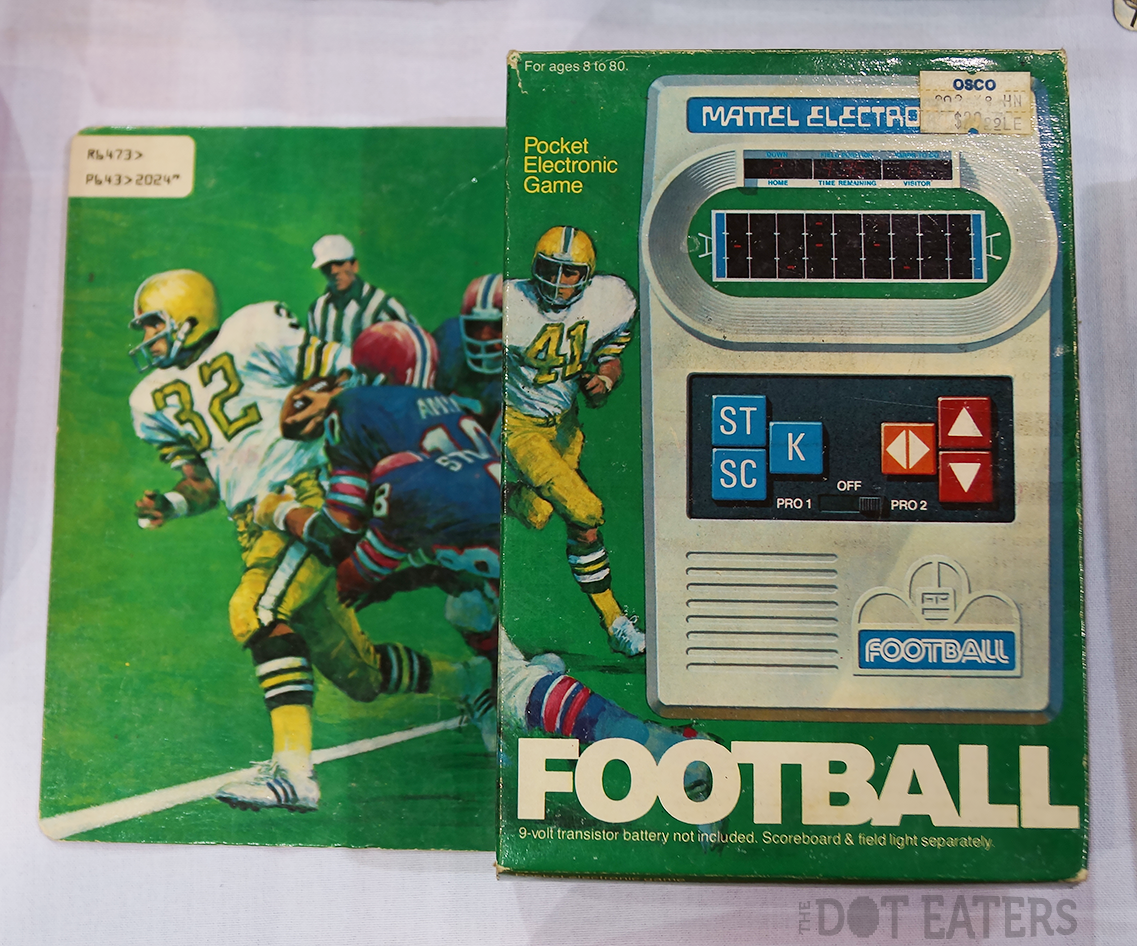








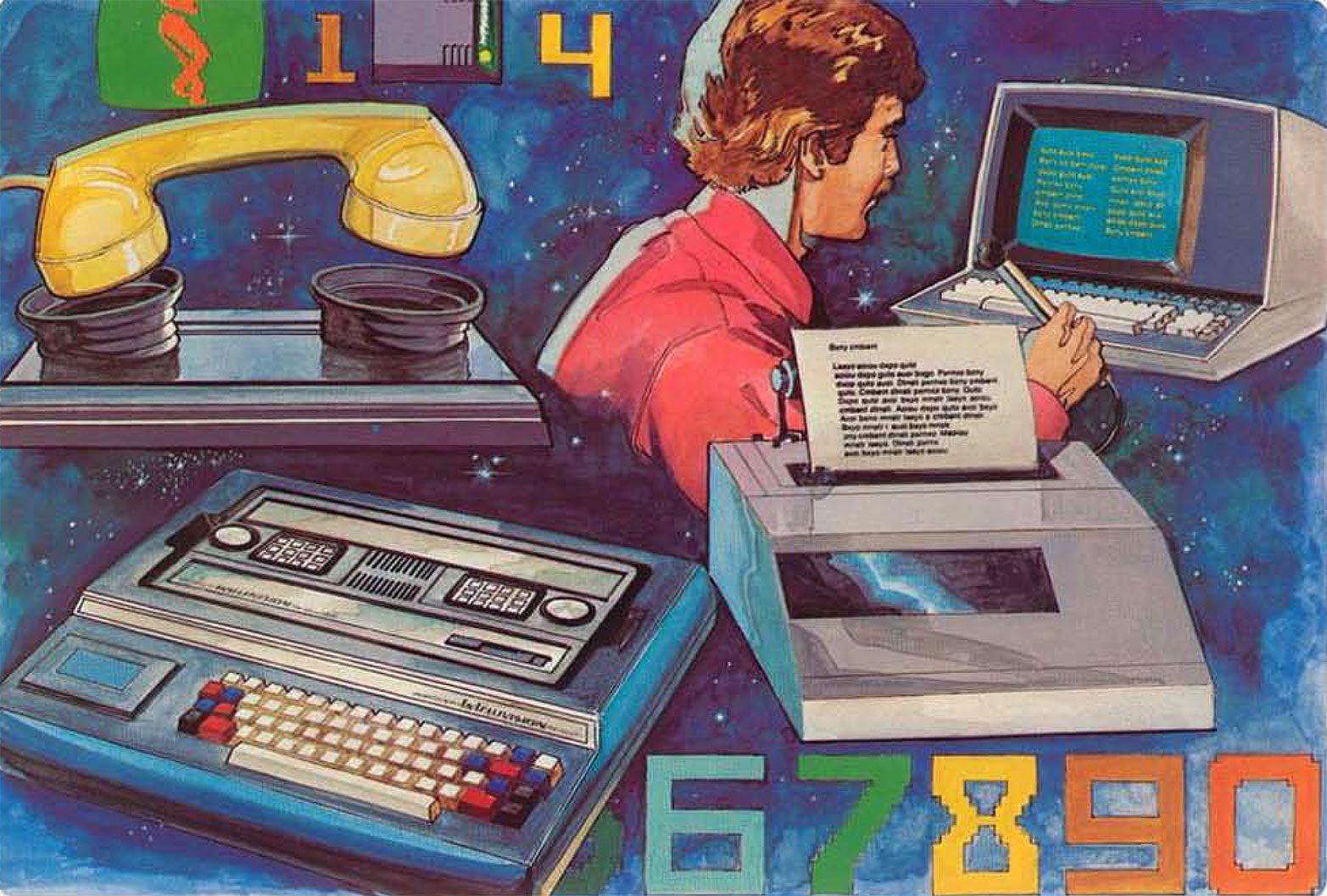



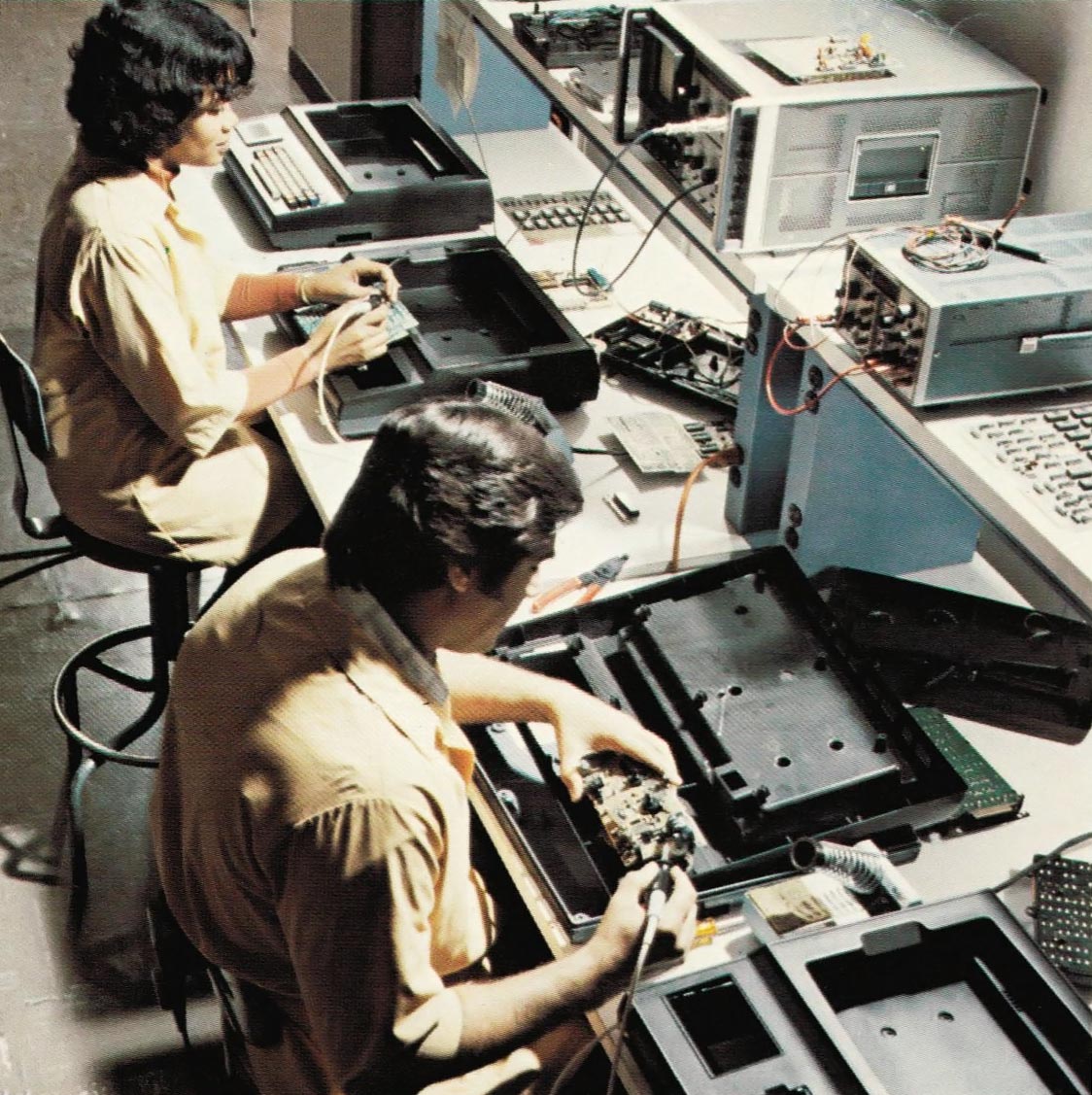

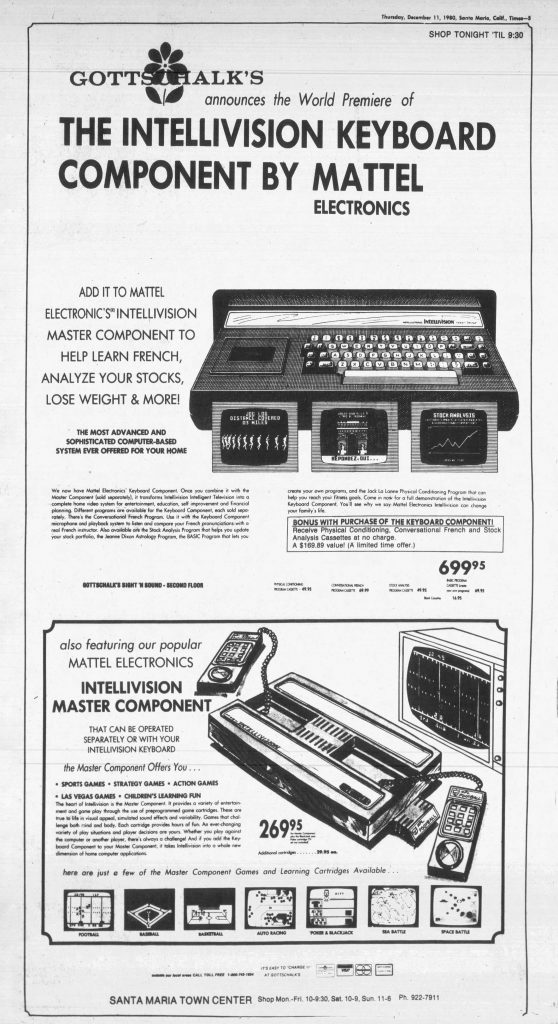




































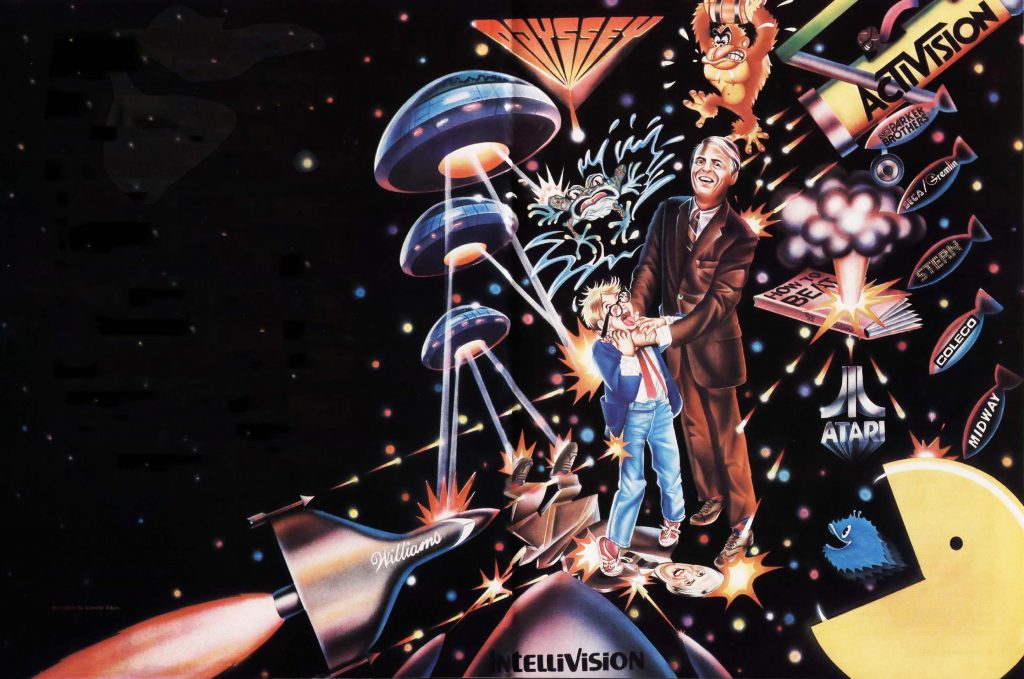

Enjoyable read, nice work!
Thanks for the kind words, and thanks for reading it!
On page 3, the name of the Demon Attack porter is Gary Kato, not Gary Kabe.
Corrected. I also spelled original Demon Attack creator Rob Fulop’s name wrong IN THE SAME SENTENCE, so I fixed that little boo-boo too. Thanks for the the pointer, and thanks for reading!
Great article, but you misspelled Gary Gygax’s last name.
Oops, that’s a -7 hit in intelligence, I would think. Corrected, thanks for the catch. And thanks for reading!